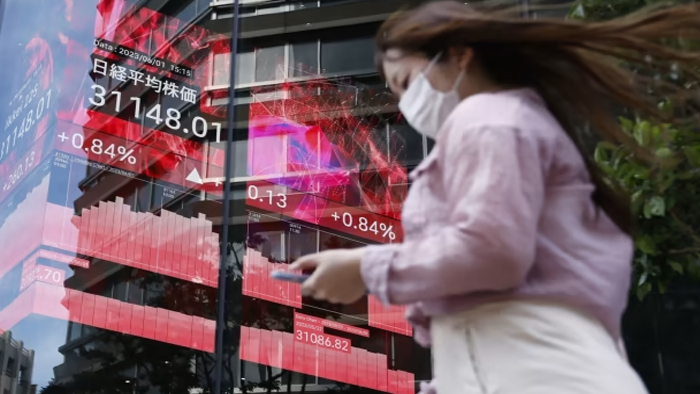Nikkei Reaches Historic Peak, Echoing 1989 Highs
Japanese stocks have achieved a remarkable milestone, reaching a record high on Thursday that surpasses levels last witnessed in 1989 during the height of the bubble economy. This surge in the Nikkei share average, which peaked at 39,156.97 points, has marked a significant moment in Japan’s financial history, breaking the previous intraday record of 38,957.44 points set on the final trading day of 1989. The index closed even higher at 39,098.68, showcasing a robust 2.19% increase.
This achievement is not just about surpassing a numerical threshold; it represents a historic recovery, taking 34 years to reclaim its heights – a duration longer than any major market has taken, including Wall Street’s recovery from the 1929 crash and the Great Depression. Tsutomu Yamada, a senior market analyst at Au Kabucom Securities in Tokyo, reflects on this achievement as the dawn of a new era, symbolizing Japan’s escape from deflation and the opening of a new chapter in its economic story.
In 2023, the Nikkei was already showing signs of this resurgence, being the best-performing major bourse in Asia with a 28% surge. This momentum has continued into 2024, with an impressive 17% rise so far. This performance stands out even when compared to tech-heavy indices like Nasdaq, which had a 43% rise last year and a 6% increase in 2024.
The breakthrough moment was met with excitement on Nomura’s Tokyo trading floor, where traders celebrated as the Nikkei surpassed its 1989 high. This enthusiasm was not just about numbers; it was a collective acknowledgment of overcoming decades of underperformance that had deterred global investors.
Japan’s economic resilience, despite facing a domestic recession, conflicts in Europe and the Middle East, a global inflation shock, and rising rates worldwide, has been noteworthy. Its trade exposure and a weaker currency have been instrumental in insulating the economy from internal demand issues and boosting exporters’ earnings.
The resurgence of the Nikkei also symbolizes a significant psychological shift for the Japanese people, many of whom have never seen the index at these levels. Richard Kaye, a Japan-based portfolio manager at Comgest, highlights the potential for this momentum to attract domestic liquidity in unforeseen amounts.
Corporate governance changes in Japan, such as driving buybacks and unwinding cross-holdings, have been catalysts in this rally. Foreign investment, including significant investment from Warren Buffett in 2020, has put a spotlight on Japan’s attractive valuations. Foreign investors infused a substantial 6.3 trillion yen ($42 billion) into the equity market last year, with a net spend of 1.16 trillion yen in Japanese equities in January alone.
Further fueling this rally is a robust earnings season, a depreciating yen nearing the 150 per dollar level, and expectations that the Bank of Japan will maintain its ultra-easy monetary policy. Bank of America’s Asia fund manager survey for February reflects this optimism, with nearly a third of participants expecting double-digit returns from Japan’s stock market over the next 12 months. This optimism is underlined by analysts raising their year-end forecasts for the Nikkei, with expectations now set at around 39,000 points by the end of 2024.
However, despite this strong performance and optimism, there are indications in the derivative market of potential short-term disruptions to this momentum. Nevertheless, the current scenario portrays a revitalized Japanese stock market, drawing significant interest and investment, and marking a historic turning point in its financial narrative.











